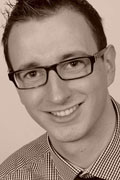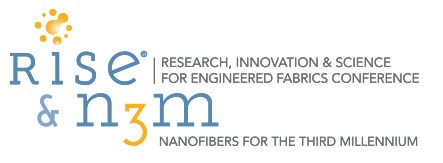
 Christian Thum
Christian Thum
Project Engineer, Dienes Apparatebau GmbH
Professional experience and education:
Jul. 2013 – today:
Dienes Apparatebau, Mühlheim, Germany
Project Engineer and Project Manager
Aug. 2011 – Mar. 2013:
Head Sport GmbH, Kennelbach, Austria
internship in Research & Development and creation of
the diploma thesis as part of the academic studies
Oct. 2007 – Mar. 2013: Otto-von-Guericke-Universität Magdeburg, Germany Certified Sports-Equipment Engineer (Diplom Ingenieur)
Fields of
expertise:
nanofiber spinning (especially centrifugal spinning), washing
of fibers
Special achievements:
- Managing of process and machine developments
- Commercialization of plants for new processes
- Standardization and efficiency increase in sales and project management
Thursday 10:30am - 12:30pm
Concurrent Session II: Technology & Materials I
Centrifugal Spinning of Nanofibers - Stepping Forward in Productivity
Abstract:The company Dienes Apparatebau GmbH based in M_hlheim am Main, Germany has since long been engaged in heating technologies and in controls of fiber lines. In 2007 the fields of activity have been extended and since then the scope of supply comprises laboratory and pilot lines for fiber production. Besides HyperBell nanofiber installations the scope of machinery covers numerous processes and is characterized by a high degree of modularization with the unique MultiMode_ control technology.
The HyperBell spinning technology for nanofibers was developed by the German Insti-tute of Textile Technology and Process Engineering Denkendorf (ITV) in 2007 and won the Techtextil Innovation Award in 2009. Commercialization and industrialization of the process commenced in 2012 by a joint project between Reiter OFT and Dienes Apparatebau. An important milestone in the strategic development of the machine technology was accomplished in 2014 by completion of an improved single centrifuge unit. At the same time such unit was started-up at a German university for development of novel biobased nanofibers.
How does the technology work?
From a closed vessel the polymer solution is constantly transported by a gear pump to a pneumatically driven high speed centrifuge. There the nanofibers are formed by centrifugal forces. The deposition of the fibers is supported by a directed air flow and an electrical field. For a high bidirectional uniformity of the web weight the forming air and the geometry of the counter electrode can be individually adjusted to the polymeric system.
What are the advantages of the spinning technology?
Main benefits of the HyperBell technology are high throughput (up to 1000 cm_/m*h of polymer with a single system) and stable spinning conditions (due to polymer solution being transported in a closed system up to the point of fiber forming). Every soluble polymer is spinnable and fiber diameters down to 80 nm can be reached.
What are the advantages of the machine concept?
For pilot and production installations identical high performance components are used. Accordingly research results can smoothly be transferred to production scale. As multiple spinning heads can be combined aside each other the machine concept allows virtually any working width. The installation of multiple rows of spinning heads in a single enclosure allows highest throughput within limited space. And the top down spinning principle enables tensionless transport of fragile substrates.

